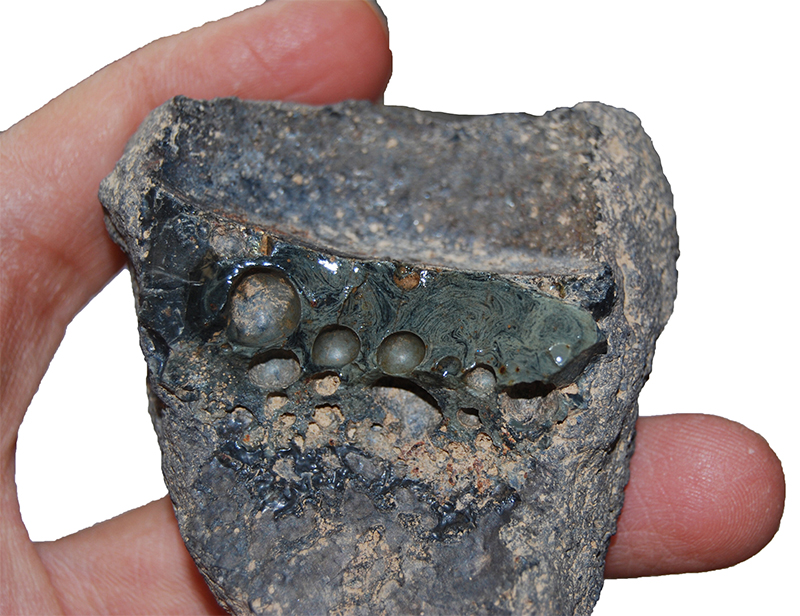The history of today's stainless steel industry can be traced back to the early 19th century, when scientists noticed iron-chromium alloys resisted corrosion by certain acids. New research, however, suggests a similar alloy was being developed much, much earlier than this – even as far back as a thousand years ago.
Archaeologists have found what they think is evidence of low-chromium crucible steel in the 11th century in what is now Chahak in Iran, a long time and a long way away from the European Industrial Revolution. The metal would have been used to manufacture armour and weapons, including swords and daggers.
Stainless steel is also known as chromium steel – it's the chromium in the mix that stops the rust – and while the earlier metal alloy isn't an exact match, it does show evidence of chromium being mixed with pig-iron in an alloy known as crucible steel.
 Crucible slag. (Rahil Alipour/UCL)
Crucible slag. (Rahil Alipour/UCL)
"This research not only delivers the earliest known evidence for the production of chromium steel dating back as early as the 11th century CE, but also provides a chemical tracer that could aid the identification of crucible steel artefacts in museums or archaeological collections back to their origin in Chahak, or the Chahak tradition," says archaeologist Rahil Alipour from University College London.
This is the earliest we've ever seen the "intentional production of a low-chromium steel" the researchers explain in their paper, meaning stainless steel has had a much longer and more varied history than experts ever knew.
While Chahak is only a small village today, numerous ancient manuscripts point to it as an important steel-making hub in the Persian era, and indeed it's the only known place in the region where crucible steel was being made at the time.
One of these manuscripts led the researchers to their new discovery; it mentioned a mystery compound called rusakhtaj (translated as "the burnt"), which the team suggests was actually a chromite sand.
"The process of identification can be quite long and complicated and this is for several reasons," says archaeologist Marcos Martinon-Torres from the University of Cambridge.
"Firstly, the language and the terms used to record technological processes or materials may not be used anymore, or their meaning and attribution may be different from those used in the modern science. Additionally, writing was restricted to social elites, rather than the individual that actually carried out the craft, which may have led to errors or omissions in the text."
Through radiocarbon dating and scanning electron microscopy analysis, the team was able to identify small amounts of the chromite in waste charcoal left over from metal-making in the 10th to 12th centuries.
This additional chromium would've made the tools and weapons produced by the mix harder and stronger. The metalworkers of the day were also putting in phosphorus, which would have made the finished alloy easier to mix but more brittle – that's why weapons made from the stuff quickly lost their value on the open market.
Persian crucible steel tools and weapons are on display in museums around the world, and now we have a fascinating new insight into how they were put together – through a process that would then get picked up again and improved upon in the 1800s.
"Chromium as an essential ingredient of Chahak crucible steel production has not been identified in any other known crucible steel industry so far," Alipour told Gizmodo.
"That is very important, as we can now look for this element in crucible steel objects and trace them back to their production centre or method."
The research has been published in the Journal of Archaeological Science.
#Humans | https://sciencespies.com/humans/the-origins-of-stainless-steel-date-back-almost-1000-years-earlier-than-we-realised/
No comments:
Post a Comment